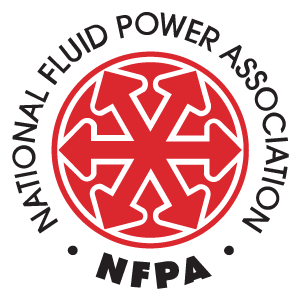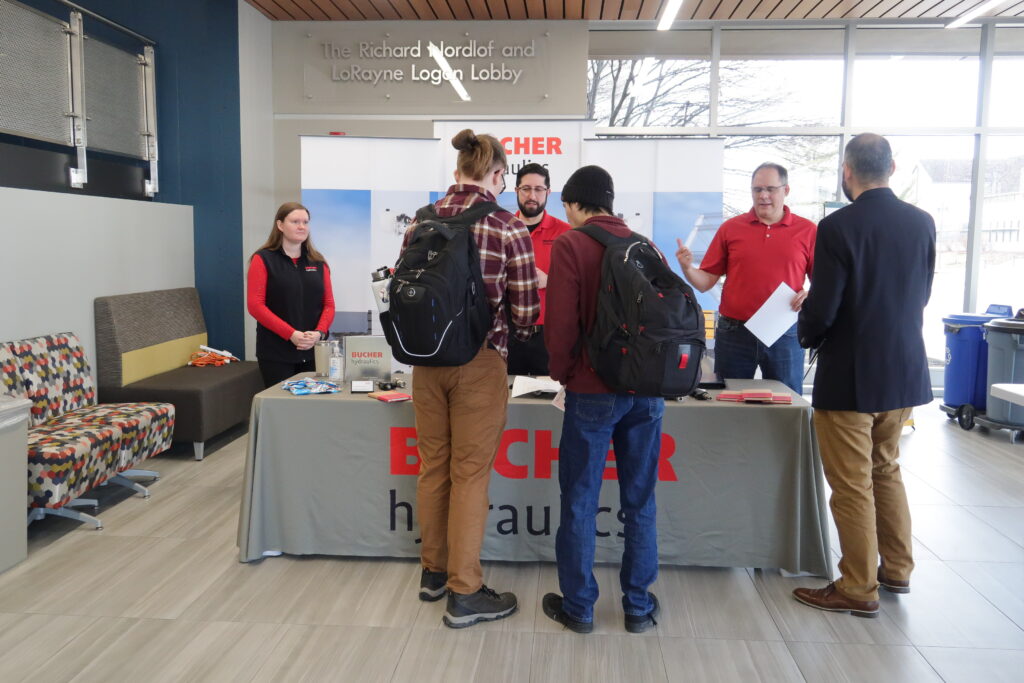By Eric Lanke
NFPA President/CEO
I recently attended the June 2019 Summit of the Center for Compact and Efficient Fluid Power (CCEFP) at Purdue University. This was the second of two meetings in our last fiscal year where the fluid power research projects supported by our new NFPA Research Supplement Program were presented.
In our efforts to increase the number of university students educated in fluid power, the NFPA Education and Technology Foundation provided ten $10,000 research supplements to ten academic faculty members working on fluid power research at six universities. This helps to engage current and build the careers of future university faculty who are and will be in a position to teach fluid power to undergraduate engineers on their campuses. The research supplements provide travel support so that each faculty member and one of their graduate students can attend to present their research at designated industry conferences and research summits like the one hosted by the CCEFP.
One such faculty member is Professor Eric Severson of the University of Wisconsin, whose graduate student, Anvar Khamitov, presented on their project, “Seamless Electric to Hydraulic Conversion,” at the CCEFP Summit. The goal here is to reduce the energy losses that occur in electro-hydraulic applications as a result of multiple energy conversions (for example, from stored electricity to rotating mechanical to the pump mechanism to the piston to hydraulic output). Working with funding provided by the CCEFP, Severson and his team (which includes Professor Jim Van de Ven and several students at the University of Minnesota) are seeking to prototype a “Linear Electromagnetic Piston Pump” in which an oscillating piston that creates hydraulic flow is an integrated part of a combined electric motor/pump.
They have created a model for their design and are now working to optimize it. In that process, they have adjusted piston diameter, piston/cylinder gap height, and check valve parameters to drive the highest possible efficiency. They are also working on an electrical model, in which they are looking at different constructions for the electromagnet (solid iron core, using thin iron sheets, soft composites, etc.) and are working to optimize it for a specific output power and output pressure. Once optimized, they plan to build a combined model and then move to an actual prototype.
A copy of their presentation slides can be accessed here.
Collectively, the research projects supported by NFPA Research Supplements represent more than $4.9 million in funding from a variety of organizations, including the U.S. Department of Energy, the National Science Foundation, and the Center for Compact and Efficient Fluid Power (CCEFP). They are an excellent sample of the growing body of fluid power research being funded by the federal government and other research organizations.
Like this post? Share it!
Recent Posts
Fall 2024 Fluid Power Recruitment Event with NIU
RSVP for our Fall 2024 Fluid Power Recruitment Event with Northern Illinois University (NIU). NIU is one of seven universities recognized as a Power Partner, teaching fluid power competencies and engaging in all NFPA educational programs. At this event, your company will have the opportunity to connect directly with NIU engineering students. Engaging in meaningful conversations,…
Now Announcing: Cuyahoga Community College as a Fast Track Hub in Ohio
NFPA’s Fast Track to Fluid Power is a workforce development pathway that partners local technical colleges with fluid power industry members and high school teachers. These networks create awareness and interest in fluid power and train students along a path that leads to careers in fluid power at NFPA member companies. We are pleased to…
Now Announcing: Houston Community College as a Fast Track Hub in Texas
NFPA’s Fast Track to Fluid Power is a workforce development pathway that partners local technical colleges with fluid power industry members and high school teachers. These networks create awareness and interest in fluid power and train students along a path that leads to careers in fluid power at NFPA member companies. We are pleased to…




